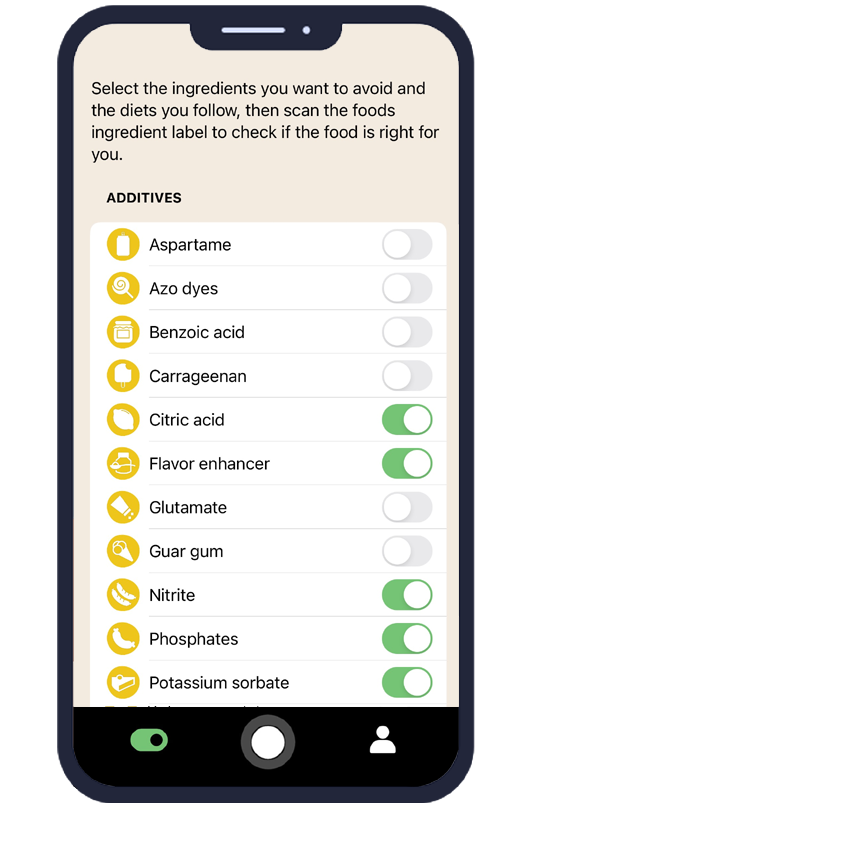Everything You Need to Know About Sulfur dioxide and sulfite and How AI Eat This Can Help
Sulfur dioxide and sulfite are common food additives used as preservatives in many processed foods and beverages. For consumers with sulfur dioxide and sulfite intolerance or those following specific dietary restrictions, identifying these compounds in food products can be challenging and time-consuming. The AI Eat This app revolutionizes this process by instantly scanning ingredient lists and alerting users to the presence of sulfur dioxide and sulfite, making it easier than ever to maintain a safe and healthy diet.
What Is Sulfur dioxide and sulfite and Where Is It Used?
Sulfur dioxide and sulfite are sulfur-based compounds widely used in the food industry as preservatives and antioxidants. These food additives help prevent spoilage, maintain color, and extend shelf life by inhibiting bacterial growth and oxidation. The FDA recognizes several forms of sulfites, including sulfur dioxide (E220), sodium sulfite (E221), and potassium metabisulfite (E224).
These preservatives are particularly effective in preventing browning in fruits and vegetables, making them popular choices for food manufacturers. Sulfur dioxide and sulfite work by releasing sulfur dioxide gas, which creates an environment hostile to bacteria and other microorganisms that cause food spoilage.
Common Foods with Sulfur dioxide and sulfite
Sulfur dioxide and sulfite appear in numerous food products across various categories. Understanding where these additives are commonly found helps consumers make informed choices about their dietary restrictions.
- Dried fruits (apricots, raisins, and figs)
- Wine, beer, and fruit juices
- Processed potatoes and potato products
- Pickled vegetables and condiments
- Frozen and canned seafood
- Baked goods and dough products
- Soup mixes and dehydrated vegetables
Is Sulfur dioxide and sulfite Safe? What Does the Research Say?
Regulatory Approvals and Guidelines
Major health authorities, including the FDA, European Food Safety Authority (EFSA), and World Health Organization (WHO), have approved sulfur dioxide and sulfite for use in food products. These organizations have established acceptable daily intake levels and require proper labeling when sulfite levels exceed 10 parts per million.
The FDA mandates that foods containing sulfur dioxide and sulfite must clearly list these additives on ingredient labels. This regulatory requirement helps consumers with sulfur dioxide and sulfite intolerance identify potentially problematic products and maintain their dietary restrictions safely.
Risks for Specific Groups
While generally recognized as safe for most people, sulfur dioxide and sulfite can cause adverse reactions in sensitive individuals. People with sulfur dioxide and sulfite intolerance may experience symptoms ranging from mild digestive discomfort to severe allergic reactions.
Individuals with asthma face particular risks, as sulfur dioxide and sulfite can trigger respiratory symptoms and bronchospasms. The Centers for Disease Control and Prevention estimates that approximately 5-10% of people with asthma may be sensitive to sulfites.
How Does AI Eat This Help You Avoid Sulfur dioxide and sulfite?
The AI Eat This app transforms how consumers manage their dietary restrictions by providing instant, accurate ingredient analysis. Using advanced artificial intelligence, the app scans ingredient lists through your smartphone camera and immediately identifies sulfur dioxide and sulfite in any language.
Users can set personalized filters for sulfur dioxide and sulfite avoidance, ensuring the app alerts them whenever these food additives appear in scanned products. This feature proves invaluable for people managing sulfur dioxide and sulfite intolerance or following specific dietary restrictions.
The app's comprehensive database recognizes various forms of sulfur dioxide and sulfite, including their E-number codes and alternative names. This thorough approach ensures users don't accidentally consume products containing these additives, regardless of how they're labeled.
Who Should Avoid Sulfur dioxide and sulfite?
Several groups of people should consider avoiding or limiting sulfur dioxide and sulfite consumption. Individuals with diagnosed sulfur dioxide and sulfite intolerance must strictly avoid these additives to prevent adverse reactions.
People with asthma should exercise particular caution, as sulfur dioxide and sulfite can exacerbate respiratory symptoms. Those following organic or natural dietary restrictions may also choose to avoid these synthetic preservatives in favor of minimally processed foods.
Parents of children with food sensitivities often seek to eliminate sulfur dioxide and sulfite from family meals. The AI Eat This app makes this process significantly easier by providing instant identification of these additives across all food categories.
Tips for a Sulfur dioxide and sulfite-Free Diet
Maintaining dietary restrictions while avoiding sulfur dioxide and sulfite requires strategic planning and consistent label reading. Focus on whole, unprocessed foods whenever possible, as these naturally contain minimal or no added preservatives.
When shopping for packaged foods, always read ingredient lists carefully, looking for sulfur dioxide and sulfite in all their forms. The USDA provides resources for understanding food labels and identifying additives.
Consider preparing more meals at home using fresh ingredients, which gives you complete control over what goes into your food. When dining out, don't hesitate to ask restaurant staff about sulfur dioxide and sulfite content in dishes, particularly in salads, wine, and processed foods.
Utilize technology like the AI Eat This app to streamline your shopping experience and ensure you're making informed choices that align with your dietary restrictions. The app's instant scanning capability saves time and reduces the stress of managing sulfur dioxide and sulfite avoidance.
Conclusion
Understanding sulfur dioxide and sulfite and their presence in food products empowers consumers to make informed dietary choices. Whether managing sulfur dioxide and sulfite intolerance, following specific dietary restrictions, or simply seeking to minimize processed food consumption, knowledge is your best tool.
The AI Eat This app bridges the gap between complex food labeling and practical dietary management, making it easier than ever to identify and avoid sulfur dioxide and sulfite. With instant ingredient scanning and personalized filters, the app supports your health goals while simplifying your shopping experience.
Take control of your dietary restrictions today – download AI Eat This for free testing and discover how technology can transform your approach to food safety and ingredient awareness!

70 filters
With over 70 filters, you can easily avoid certain ingredients and follow your dietary preference.

Paleo

Pescetarian

Ultra-processed food

Vegan







































































